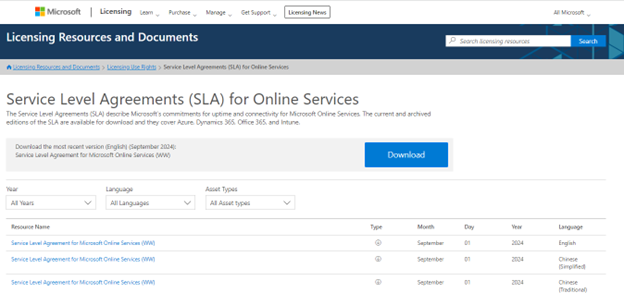If you generally work in the IT or tech sectors, you must be familiar with technical writing. Technical writing acts as an intermediary between the creators and the users.
Every customer and professional needs information on how that particular item or procedure works, from a new piece of software to a particular tool or a definite process. This is where technical writing comes into play.
Without technical writing, users would be unable to understand how to use a specific product or even perform a particular task correctly, which could lead to their avoidance of buying the product.
A well-crafted technical writing allows the users to address issues on their own without reaching out to support teams.
But technical writing comes in many forms, each tailored to different audiences. Understanding the multiple forms of technical writing is very important, whether it is for laymen or professionals. Let’s look at the examples of technical writing that every technical writer should know.
4 Major Categories of Technical Writing
Technical writing comes in many forms, each serving different audiences and purposes. Here are four major categories:
End-User Technical Writing
This type of technical writing is for non-technical audiences who use a product or service but don’t need to understand its inner workings. The primary goal is to make complex technology or systems accessible and easy for everyday users. For instance, when Apple introduced a new iPhone, the manual offered to the user provided guidelines on how to use it, including how to set up the phone without the need to explain the structure of the operating system, namely iOS.
Examples of End-User Technical Writing:
- User Manuals
- FAQs
- Installation Guides
- Help Desk Articles
- Product Overviews
- Release Notes
Expert-to-Expert Technical Writing
It means documents that professionals in a particular industry prepare for other professionals in the same field. Such documents enclose technical terms, broad ideas, in-depth concepts, and detailed explanations. The purpose is to share advanced knowledge, procedures, or research findings that require a high level of understanding.
In a YouTube interview, an API documentation expert, Tom Johnson, highlighted, “Good expert-to-expert documentation often walks a fine line between being informative without overwhelming the reader.”
Examples include:
- Research Papers
- Technical Specifications
- White Papers
- API Documentation
The tone is professional, and the writing assumes familiarity with the subject matter, jargon, and methodologies.
Process Documentation Writing
Process Document Writing provides instructions on how people should undertake certain organizational activities. It explains processes, making tasks easier to manage in areas like service delivery or compliance. Adding visuals like flowcharts helps make instructions clearer. For example, a manufacturing guide shows how to assemble a product, and an IT guide explains how to back up data.
It shows how to follow processes to reduce errors and simplify operations. This also helps train employees. Process documents include SOPs, work instructions, flowcharts, checklists, process maps, and policy guidelines. These ensure tasks are handled consistently.
Technical Marketing Communications
Technical marketing communication provides an easy means of explaining technical products or services to business buyers. It focuses on product attributes, advantages, and how the product solves client challenges. This approach integrates technical competency with marketing competency, creating advantages and solving client challenges. This approach helps businesses form a better value analysis of the product to make the right decisions. Communication helps people agree and sets an organization apart from its competitors.
Examples include product datasheets, case studies, white papers, webinars, blog posts, and marketing emails. Cisco uses case studies to show the value of networks. Microsoft uses white papers to explain the benefits of the cloud. Technical marketing communication simplifies ideas, builds trust, drives decisions, and boosts interest.
Technical Writing Examples You Should Know
Now, let’s explore some examples of technical writing that every technical writer should be familiar with:
User Manuals
Syed Haroon Shah, the Senior Technical Writer at Edetek, said, “User manuals must be written as a procedure, not as a paragraph, and in the document, there should be a lot of visuals to help understand the text. ”
Getting a user manual helps one understand how to operate a particular product. Manuals offer detailed descriptions of the processes involved in carrying out specific tasks. They include diagrams, FAQs, and troubleshooting tips. The idea is to provide a seamless user experience. Contemporary manuals are not restricted to simple texts.

For example, Apple provides simple diagrams and tutorials on using the iPhone. Some companies today offer an e-manual that changes as the software evolves. Some include features such as instant QR code scanning for troubleshooting. Besides efficiency, user manuals also pay attention to accessibility and sustainability. Microsoft has accessibility features such as braille and audio for disabled users. Generally, it is possible to identify that the user manuals are becoming more intelligent and based more on user engagement.
Standard Operating Procedures (SOP)
SOPs are essential for training and onboarding employees. They explain work processes, help organize tasks, and manage them. SOPs ensure quality by giving clear guidelines on how to maintain high standards. They also support company rules and ensure employees follow legal requirements.

SOPs often include checklists to ensure all steps are followed. They can be part of an employee handbook, offering clear guides for tasks and safety. This helps employees handle equipment and materials correctly. SOPs improve internal activities and management, making business operations smoother and more cost-effective.
SOPs include customer service protocols, IT troubleshooting steps, and inventory management procedures.
SOPs provide clear steps that create order, compliance, and efficiency. They help employees work together better and support the organization’s goals.


SOPs provide specific steps that result in order, compliance, and efficiency in a working environment. They can be very helpful in facilitating employees’ interactions enhancing the organization’s operation and attaining organizational objectives.
Knowledge Base Articles
Knowledge Base Articles provide clear instructions on how to solve problems. They have sections like “how-to,” FAQs, and troubleshooting steps. Users can find answers without needing support. Topics cover software use, account management, and fixing common issues.

When a knowledge base is powered by AI search, like Eddy in Document360, users can save time searching for information. Eddy quickly understands your search intent and summarizes the relevant information from the Knowledge base.
These articles boost self-service in organizations. They help employees solve problems on their own, reducing the need for IT support. Easy access to information improves workflows and productivity. A solid knowledge base ensures consistent training and decision-making. It also helps keep knowledge within the company when employees move to new roles or leave.
API Documentation
API documentation improves usability and developer experience (DX). API testing tools like Postman’s collections or sandboxes enable developers to run API calls, thus minimizing mistakes and accelerating the process. Well-structured API documentation contains parameters, specifications, and descriptions.

API documentation makes API more usable and increases the developer experience (DX). API testing tools such as Postman’s collections or sandboxes enable developers to run API calls, thus minimizing mistakes and accelerating the process. A good API should contain parameters, specifications, and descriptions.
Hannah, a Technical Writer at Azion, says, “Documenting APIs with the right framework and specifications is crucial for developers, especially REST and GraphQL APIs.” Clear documentation helps organize REST APIs and provides examples for GraphQL APIs. It makes working with the system more accessible and improves the developer experience by explaining complex concepts clearly.

Read more: 7 API Documentation Tools for 2024
Schedule a demo with one of our experts to take a deeper dive into Document360
Book A Demo
Software Installation Guides
Software installation guides are step-by-step guides that help users install software. Documentation is usually provided with software, and it is essential.
A sound installation guide includes the following:
- Clear step-by-step instructions
- Videos for visual learners
- Frequently Asked Questions and Answers section
- A help and support section for solving problems
Modern tools make it easy to write and update these guides. These tools help create guides that are simple and user-friendly.
Good guides reduce user frustration, which means fewer problems for support teams and increased user satisfaction with the software.

Troubleshooting Guides
A troubleshooting guide helps users solve product or software problems. It gives specific instructions on how to locate the issues and how to fix them if there are. These guides save time and lessen the number of support calls.
These are usually located in the manuals, help sections, or software. They assist both starting and experienced users. These guides evolve over the product life cycle and enhance the user experience.
Technical writers develop these guides with the developers and support teams. They are for end-users, technical support, and sometimes employees within the company. They simplify complex information and reduce frustration.
Training Materials
Training materials are instructions to follow to do a specific task. It aids both new employees and ongoing training. It contains simple guidelines and procedures that any layman would easily understand.
Training manuals can be in various forms, such as written documents, PDF formats, or online training. They include safety manuals, software installation guides, and customer service handbooks.
It ensures everyone learns the same information, helping maintain consistency and equal understanding. It also ensures consistent compliance with procedures, reducing the chances of errors. Thus, an ideal training manual contains illustrations, such as charts or images, to enhance the clarity of the instructions.
A well-written manual takes time and energy and has to be updated periodically.
Service Level Agreements (SLA)
SLA is a contractual agreement between a service provider and a customer. It defines the service level and performance metrics like uptime and response time. SLAs explain the services offered, how they are measured, and what happens if standards are unmet. They are used to ensure both parties have clear expectations. SLAs help prevent disputes by setting clear guidelines and performance targets. They also outline remedies or penalties if the agreed service levels are not met. Thus, it controls the quality of service as well as customer satisfaction.

White Papers
White papers are not the flowery language of sales pitches or marketing pamphlets and fliers. They are not used as a simple call for product or service advertisement. But they give detailed information about a subject or an issue. It is good to note that white papers are not pieces of writing that comprise one’s own opinion. It relates to facts, actual findings and data.
They are not simply casual articles or blog posts. But, white papers are more straightforward, informative, and profound. They seek to persuade or convince the readers of a particular topic or problem. To begin with, white papers are not case studies, which sets them apart. They provide a broader perspective and probable remedies. To sum up, white papers are business-like and thoroughly researched. They cannot be seen as mere promotional or author’s opinions.
Request for Proposal (RFP)
A Request for Proposal is a formal way business organizations seek vendors or service providers. It describes the requirements for the project and what it aims to achieve. An RFP is an application firms use to request offers from potential suppliers. The RFP includes essential details like budget, timelines, and specific requirements. Vendors then submit proposals showing how to meet the project’s needs.
Learn more about requests for Proposal writing from this ebook

The person who creates an RFP differs in a way. It could be an RFP manager, executive department head, or a committee member. Some typical teams involve finance, sales, legal, product and marketing departments.
Mickella Rast, the proposal writer, specifies that proposal writers require preparation, assess strengths and weaknesses, expect competitors, and do reviews: “AI can be helpful, but security issues arise, consequently, need cooperation for safe and secure use.”
The main goal of an RFP is to compare different offers. This helps the organization choose the best vendor based on cost, quality, and fit.
Policy Documents
A policy document is an official guide outlining an organization’s rules, standards, and procedures. It ensures consistency, transparency, and compliance. Examples include HR, security, compliance, and operational policies. Key components include the purpose, scope, guidelines, and procedures. These documents help organizations manage processes, clarify roles, and protect legally. They are often revised to keep up with laws or changes.

What’s not: A policy document is not a suggestion. It is binding and must be followed to ensure smooth operations and accountability. Unlike a policy, a memo or suggestion does not carry legal or organizational weight.
Good to note: Avoid one large document for all policies. Instead, create separate policies for HR, security, legal, and processes.
This approach improves clarity, relevance, and management for each department.
Conclusion
Technical writing isn’t just about putting words on a page. It’s about creating straightforward, helpful content that meets the needs of your audience. To truly excel, you need to understand and master different types of technical writing.
What do your readers need? What type of documentation will help them the most? Each type of technical writing serves a specific purpose. Don’t just glance at these examples—use them to inspire your technical writing. Tailor your documents to meet user needs and watch your writing make a meaningful impact.
Still unsure how to get started? Document360 can guide you in creating, organizing, and refining your technical documents effectively and efficiently.
Frequently Asked Questions
-
What is technical writing and its examples?
Technical writing explains complex information clearly. Examples include user manuals, API documentation, and software installation guides.
-
What are the 7 C’s of technical writing?
1. Clear – Use simple language. 2. Concise – Be brief and to the point. 3. Concrete – Provide specific details. 4. Correct – Ensure accuracy and proper grammar. 5. Coherent – Organize information logically. 6. Complete – Include all necessary information. 7. Considerate – Address the reader’s needs.
-
What are the five basic types of technical writing?
1. User Manuals 2. Technical Reports 3. API Documentation 4. Standard Operating Procedures (SOPs) 5. Training Materials
-
What are the 5 purposes of technical writing?
1. To inform 2. To instruct 3. To explain 4. To document 5. To persuade




 –
– 

